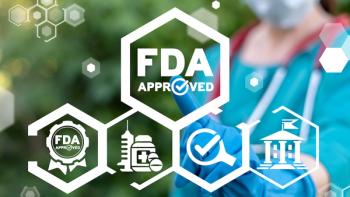
FDA Okays Pediatric Indication for Takeda’s Takhzyro
Takhzyro is the first therapy to prevent attacks of hereditary angioedema (HAE) in children ages 2 to under 6.
The FDA has
Takhzyro is a fully human monoclonal antibody that specifically binds and decreases plasma kallikrein activity, which plays a critical role in HAE. It was originally approved in the United States in 2018 to prevent attacks of HAE in adult and pediatric patients 12 years and older.
Before this expanded indication, the only approved routine prophylaxis treatment options for children ages 6 to under 12 years old required dosing every three to four days, and children with HAE ages 2 to under 6 years old had no approved prophylaxis treatment. The expanded pediatric indication is a “long-awaited milestone for children and caregivers living with HAE in the United States, as this approval is for the first prophylaxis treatment for children with HAE 2 to <6 years of age,” Cheryl Schwartz, senior vice president of Takeda’s US Rare Disease Business Unit, told Formulary Watch.
Takhzyro will continue to be priced at parity to its current pricing across the United States, Erin-Marie Beals, director of Rare Disease Communications for Takeda’s US Business Unit, told Formulary Watch. According to Beals, the approximate cost of the 150 mg/1 mL pediatric dose of Takhzyro will be half that of the 2mL adult dose — which is $24,840, according to the company’s
“We plan to publish our WAC pricing later this week,” Beals said. “Takeda believes that the cost of Takhzyro is commensurate with the value it offers for patients based on a number of factors, including its efficacy, safety and convenience of administration. Our goal is to ensure that all patients prescribed a Takeda therapy have access to it and the support they need.”
The approval was supported by extrapolation of efficacy data from the HELP Study, a phase 3 trial that included patients 12 to under 18 years of age, and additional pharmacokinetic analyses showing similar drug exposures between adults and pediatric patients.
It was also based on safety and pharmacodynamic data from the
The most common treatment-related treatment emergent adverse events in the study were injection site pain (29%), injection site erythema (14%), injection site swelling (5%), administration site pain (5%) and injection site reaction (5%).
Newsletter
Get the latest industry news, event updates, and more from Managed healthcare Executive.





















































